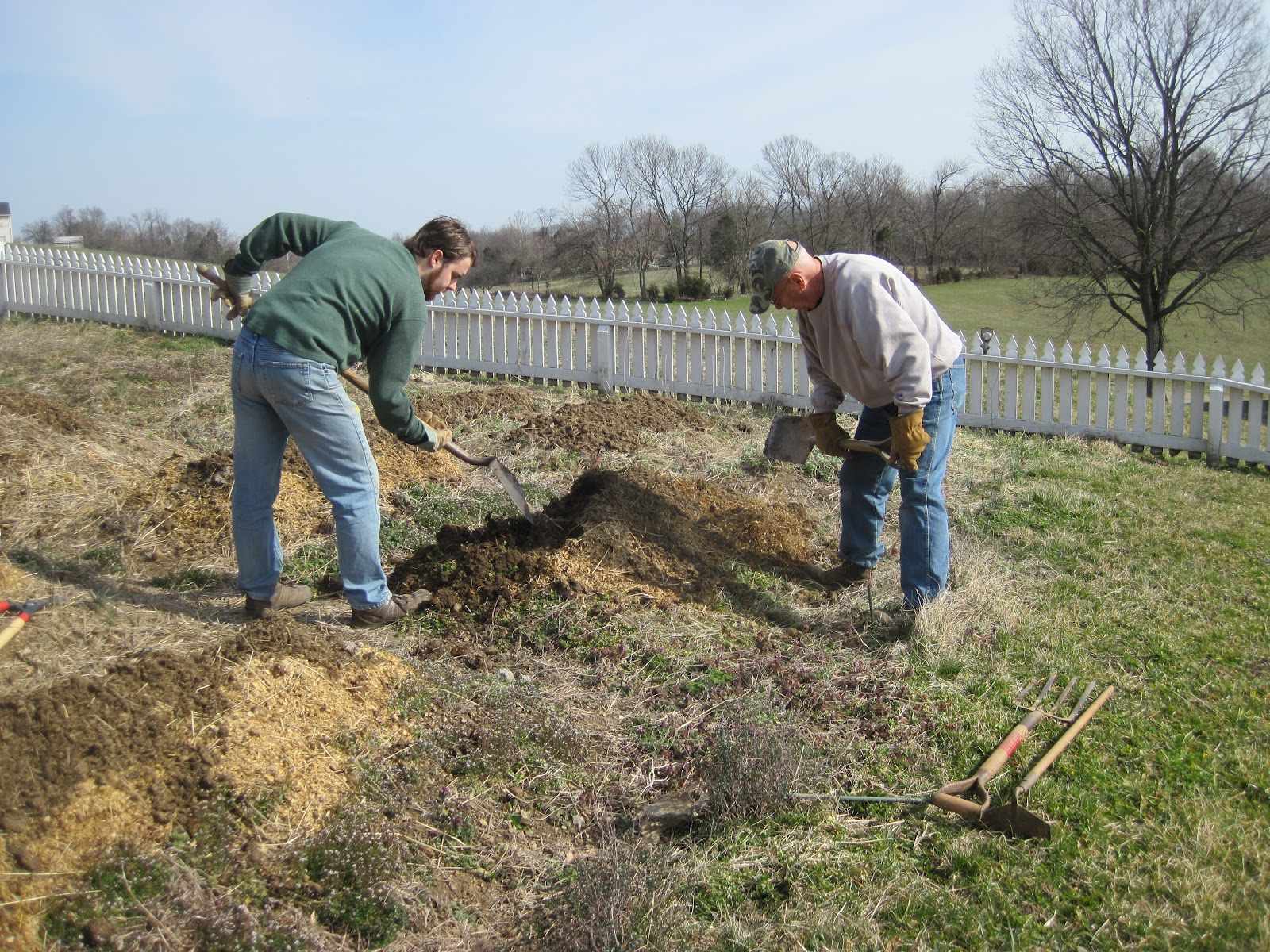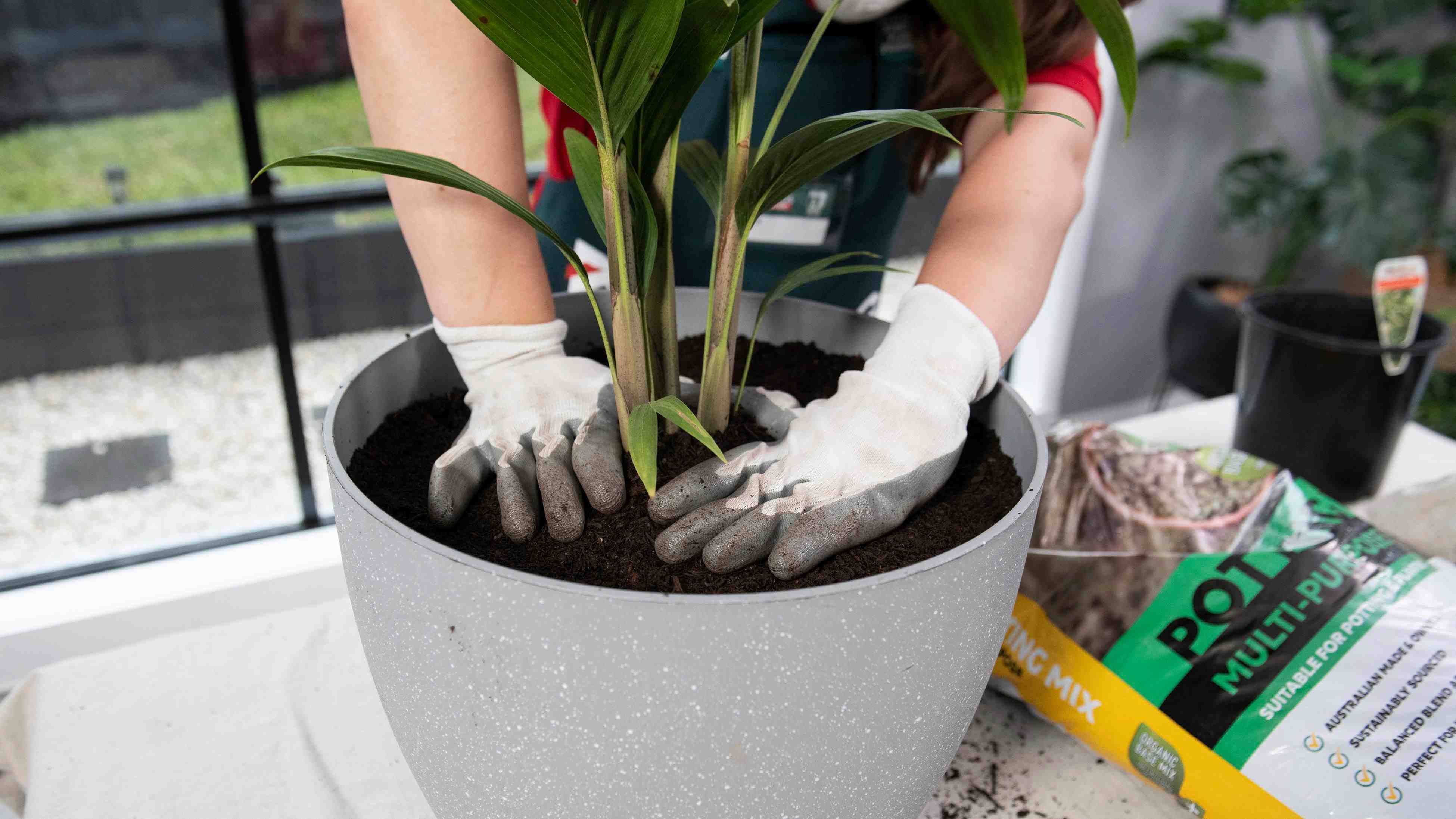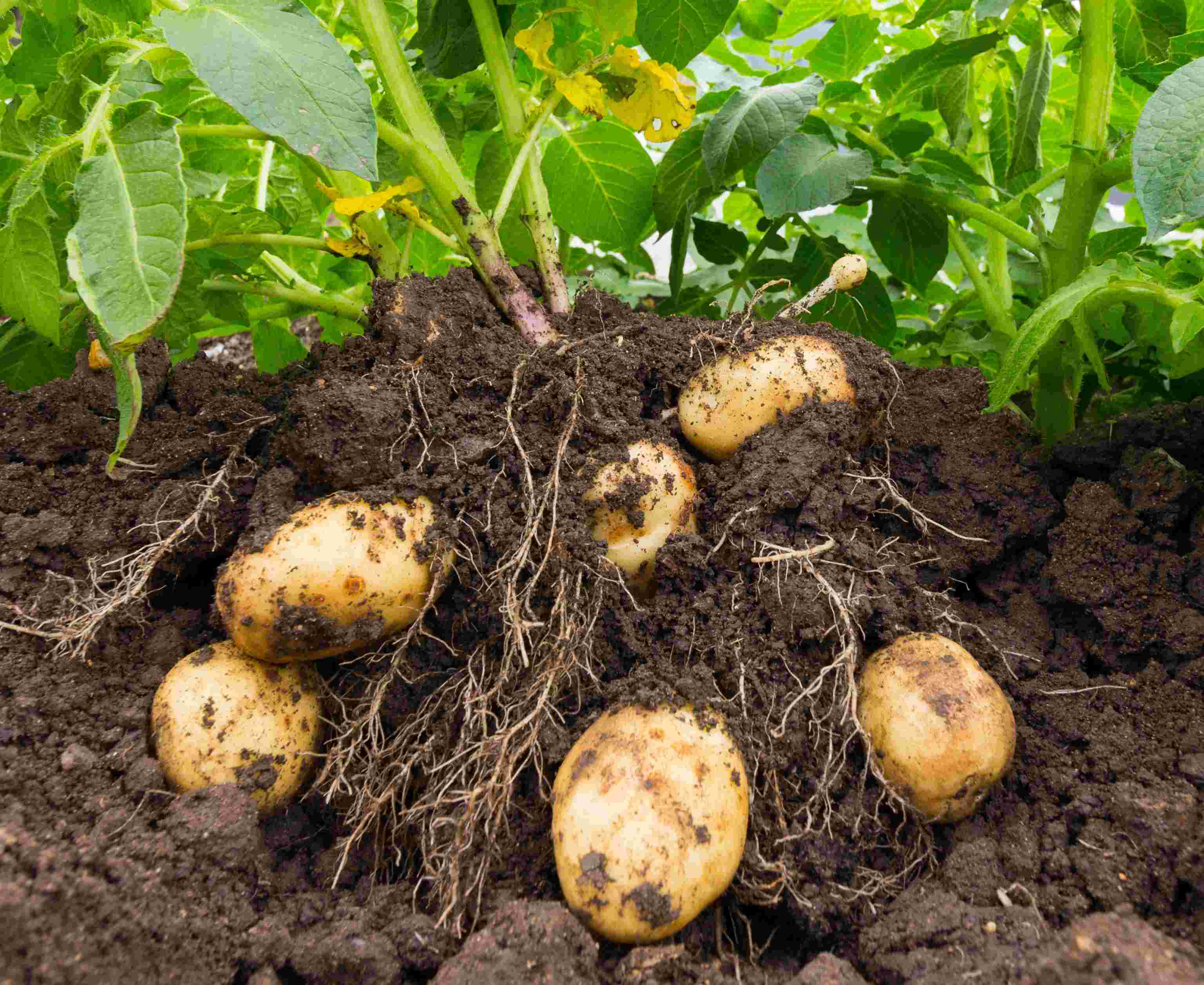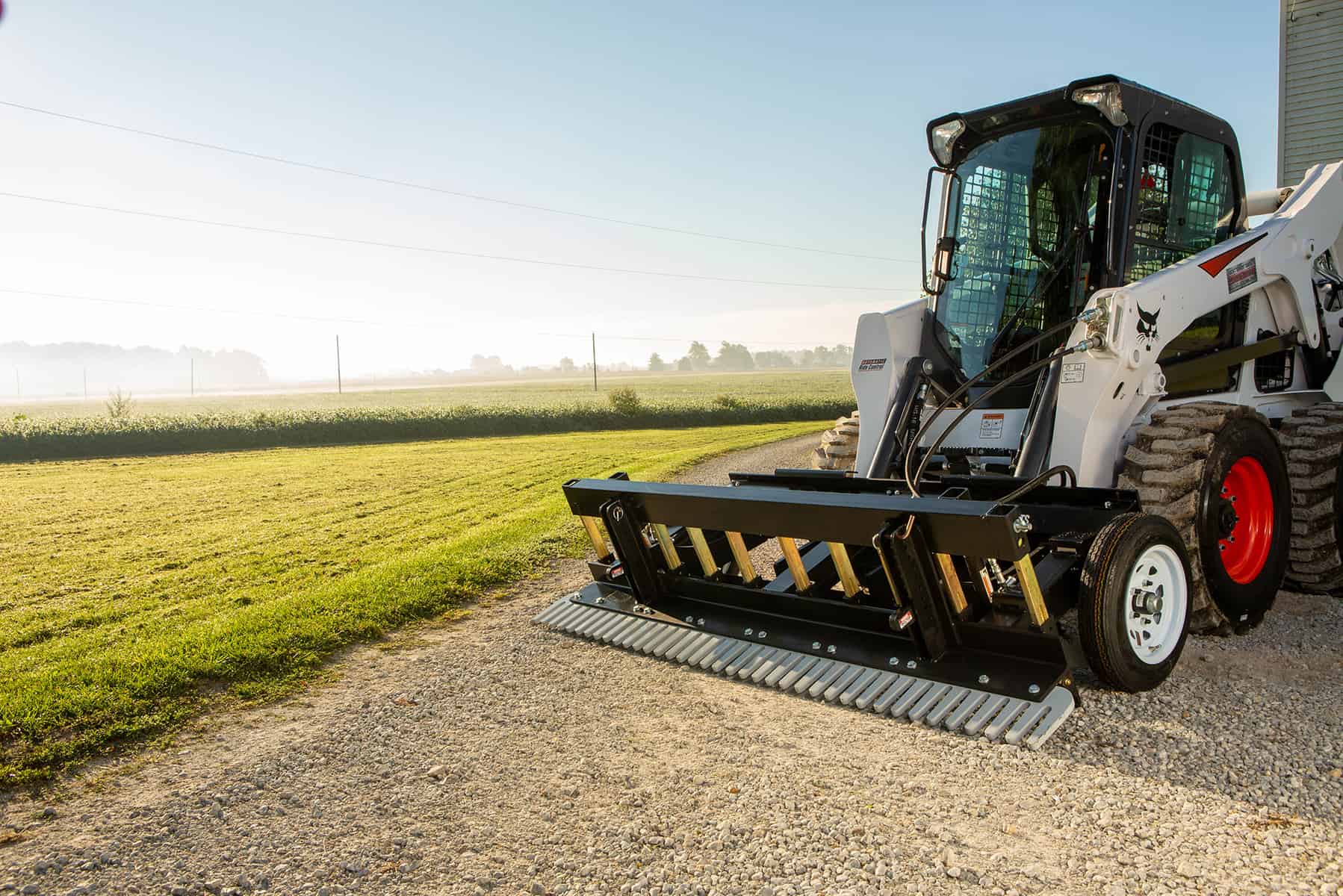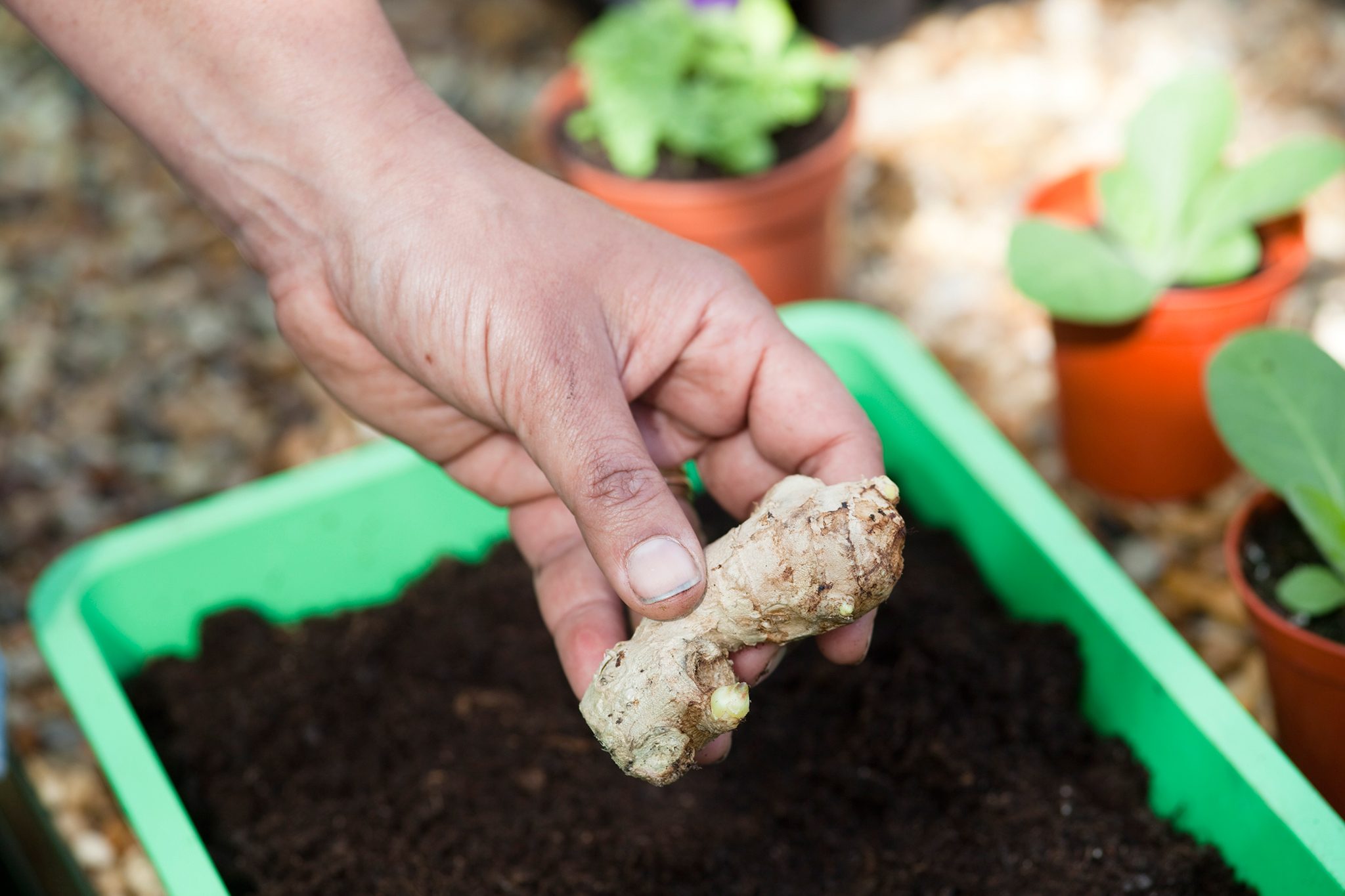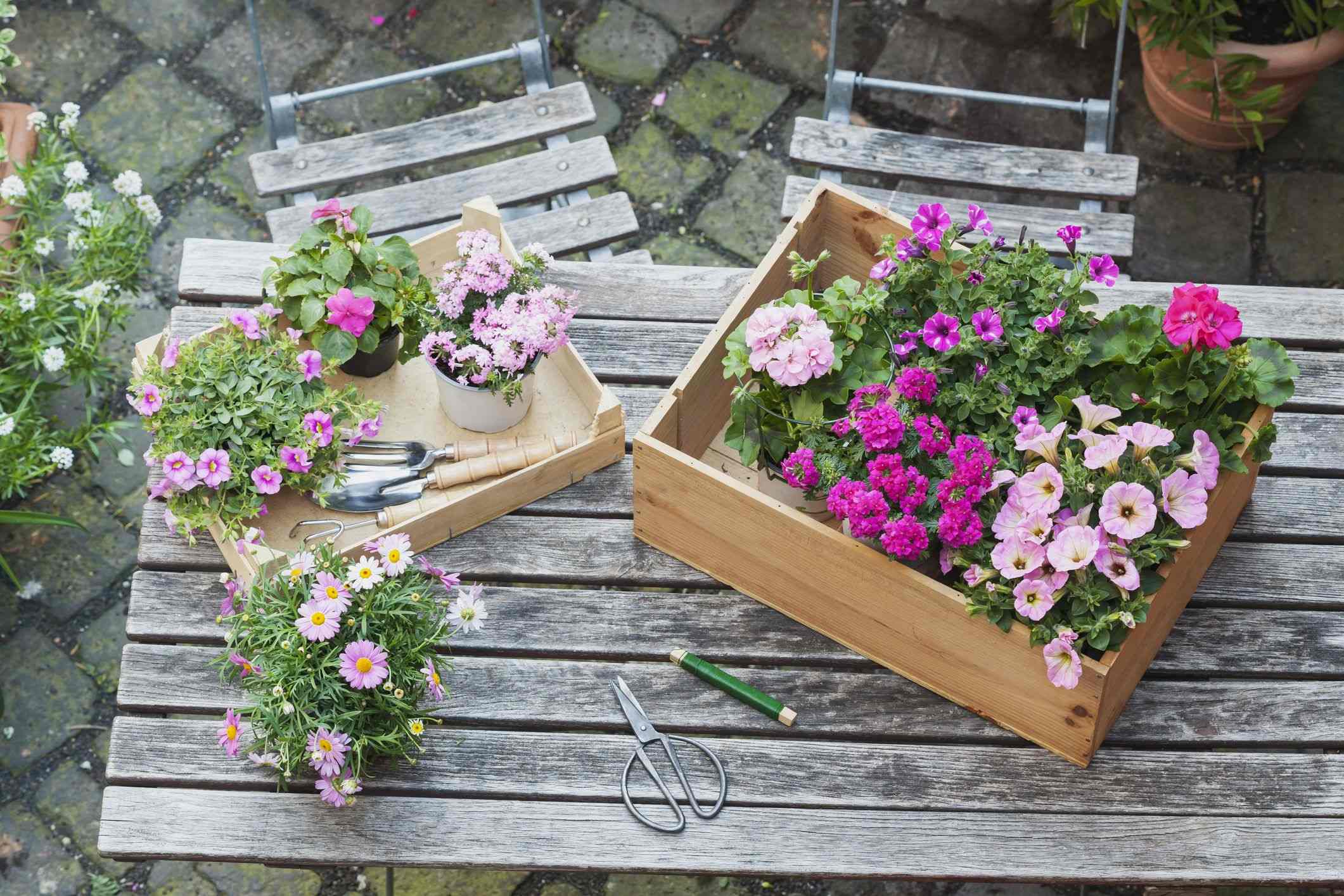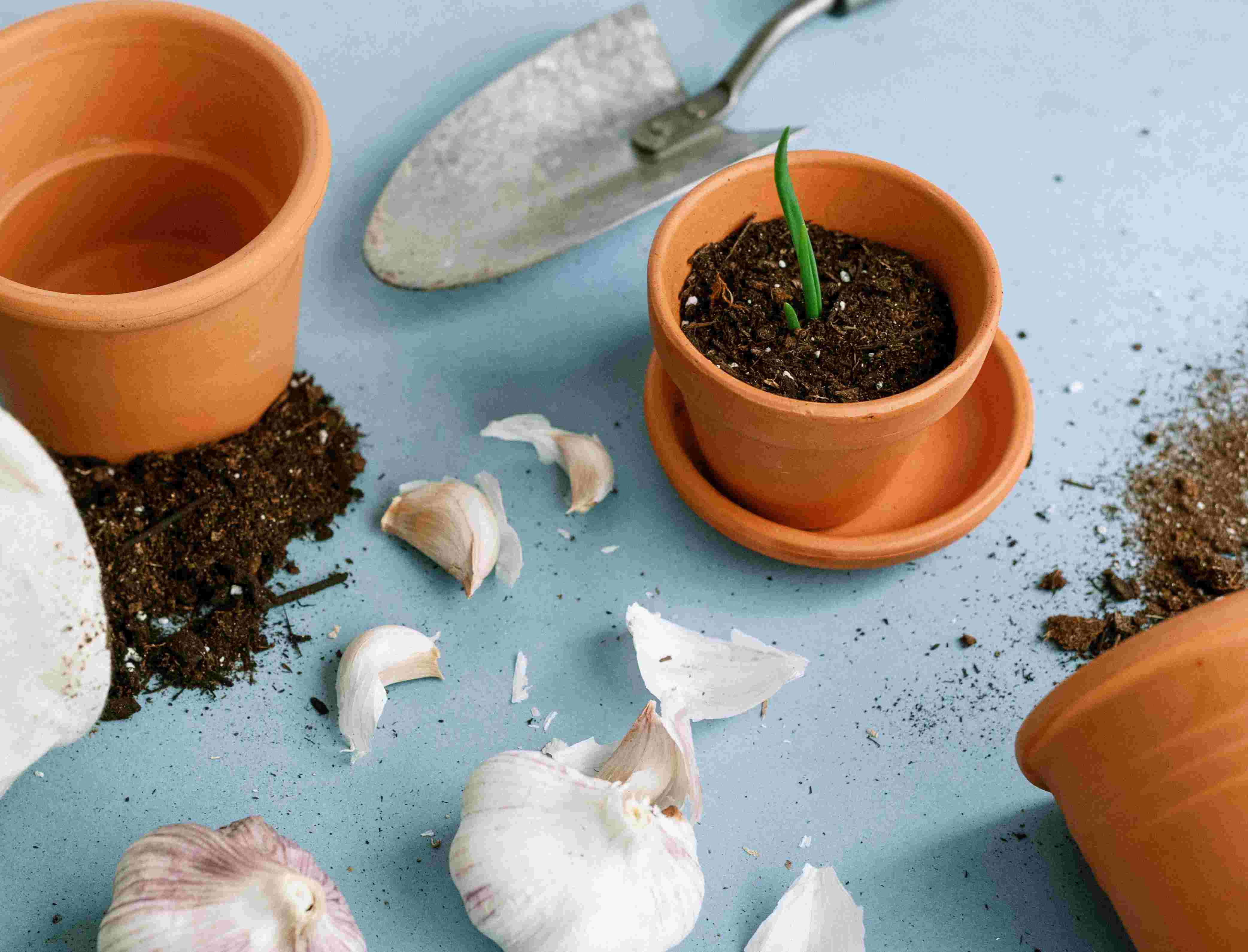Home>Gardening Basics>Tools and Equipment>What Equipment Is Generally Used To Loosen And Prepare Soil For Planting?


Tools and Equipment
What Equipment Is Generally Used To Loosen And Prepare Soil For Planting?
Modified: February 9, 2024
Discover the essential tools and equipment used to loosen and prepare soil for planting. From handheld trowels to heavy machinery, ensure a successful gardening season.
(Many of the links in this article redirect to a specific reviewed product. Your purchase of these products through affiliate links helps to generate commission for Chicagolandgardening.com, at no extra cost. Learn more)
Table of Contents
Introduction
When it comes to successful gardening, preparing the soil is a crucial step. Properly loosening and preparing the soil before planting helps create a favorable environment for plant growth, allowing roots to penetrate easily and access nutrients. To accomplish this, various tools and equipment are used, depending on the size of the gardening area and the type of soil.
In this article, we will explore the different hand tools and powered equipment commonly used to loosen and prepare soil for planting. Whether you have a small backyard garden or a larger plot of land, understanding the diverse range of tools available will help you choose the most suitable equipment for your gardening needs.
Hand tools are the go-to choice for smaller gardening areas and precision work. Their compact size and maneuverability make them perfect for tasks such as digging, raking, and weeding. On the other hand, powered tools are ideal for larger areas or when you need to save time and effort. These tools are designed to tackle heavy-duty soil preparation tasks like tilling and aerating.
So, whether you prefer the simplicity of hand tools or the efficiency of powered equipment, read on to discover the essential tools used to loosen and prepare soil for planting.
Hand Tools
Hand tools are essential for small-scale gardening tasks and provide the precision and control needed for accurate soil preparation. Here are some of the commonly used hand tools for loosening and preparing soil:
1. Spade
The spade is a versatile tool with a sharp, flat blade and a long handle. It is used for digging, turning soil, and creating trenches. The sturdy construction of the spade allows it to withstand heavy-duty tasks.
2. Fork
A garden fork, also known as a pitchfork, is another useful tool for loosening and aerating compacted soil. Its sturdy tines are designed to penetrate the soil easily, allowing for efficient loosening and breaking up of clumps.
3. Hand Trowel
A hand trowel is a small tool with a pointed blade, used for digging small holes, transplanting seedlings, and removing weeds. Its compact size and sharp edge make it ideal for precise and delicate work.
4. Garden Rake
A garden rake is a long-handled tool with sturdy metal teeth used for leveling the soil surface, removing debris, and breaking up clumps. It is especially useful for preparing the soil before planting seeds or laying down turf.
5. Hoe
A hoe is a versatile tool with a flat blade set at a right angle to the handle. It is used for chopping, weeding, and cultivating the soil. The sharp edge of the hoe can effectively cut through weeds and break up the soil.
These hand tools are essential for any gardener and provide the necessary precision and control required for small-scale soil preparation. Whether you are digging, turning, leveling, or weeding, having the right hand tools will make your gardening tasks much easier and more efficient.
Spade
A spade is a versatile hand tool with a sharp, flat blade and a long handle. It is an essential tool for any gardener and is used for a variety of soil preparation tasks.
The sturdy construction of a spade allows it to withstand heavy use and tackle demanding digging and turning tasks. Its sharp blade easily cuts through the soil, making it ideal for creating planting holes, digging trenches, and turning soil for better aeration.
When using a spade, it is important to choose the right size and weight for your needs. A standard spade typically has a blade width ranging from 6 to 8 inches, but larger or smaller options are available depending on your preferences and the scale of your gardening project.
When using a spade, start by positioning yourself behind the tool with your legs shoulder-width apart. Hold the handle firmly with both hands, one near the top and the other lower down. To dig, place the blade at the desired spot, push it into the ground, and then use your foot to apply additional pressure and drive the blade deeper. Once the blade is in the ground, use your body weight and arm strength to lift and turn the soil. Repeat the process as necessary to cover the desired area.
Aside from digging and turning soil, a spade can also be used for tasks like edging garden beds and removing stubborn weeds. Simply position the blade along the edge of the bed or the base of the weed, and apply pressure to cut through or lift them out of the ground.
To keep your spade in excellent condition, clean off any dirt or debris after each use and store it in a dry place. Regularly sharpening the blade will ensure its continued effectiveness and make your gardening tasks easier.
Overall, a spade is an indispensable tool for any gardener. Its versatile design and functionality make it ideal for various soil preparation tasks. Whether you’re digging holes for plants or turning the soil to improve aeration, a spade is a must-have tool in your gardening arsenal.
Fork
A garden fork, also known as a pitchfork, is a versatile hand tool used for loosening and aerating compacted soil. It consists of a long handle and several sturdy tines or prongs that penetrate the soil with ease.
The primary function of a garden fork is to break up clumps of soil and improve its overall structure. By inserting the fork into the ground and then lifting and turning it, the tines effectively loosen compacted soil, allowing air, water, and nutrients to reach the roots of plants more easily.
When using a garden fork, it is crucial to select one with tines that are sturdy and sharp enough to penetrate the soil. The number of tines can vary, but most garden forks have four to six, which strike a balance between effectiveness and ease of use.
To use a garden fork, hold the handle firmly with both hands, one near the top and the other lower down. Position the tines at the desired spot in the soil, then push them into the ground by applying downward pressure with your foot. Once the tines are in the ground, use your body weight and arm strength to lift and turn the soil. Repeat the process as necessary to cover the desired area.
In addition to breaking up clumps and aerating soil, a garden fork can also be used for tasks like lifting and moving organic matter, such as compost or mulch. Simply position the tines underneath the material and lift, using the fork as a leverage tool.
After each use, it is important to clean off any dirt or debris from the tines and handle to prevent corrosion. Store the garden fork in a dry place to maintain its longevity.
Whether you’re preparing a new garden bed, rejuvenating existing soil, or aerating compacted areas, a garden fork is a valuable tool to have. Its ability to effectively loosen and aerate the soil contributes to better plant growth and overall soil health in your garden.
Hand Trowel
A hand trowel is a small, handheld gardening tool with a pointed blade that is used for various tasks, including digging small holes, transplanting seedlings, and removing weeds. It is an indispensable tool for any gardener, offering precision and control.
The compact size of a hand trowel makes it ideal for working in tight spaces and performing delicate tasks. Its pointed blade allows for precise digging, making it perfect for planting small plants, bulbs, and seeds. Additionally, it is useful for transplanting seedlings from trays to the garden soil.
When using a hand trowel, hold the tool firmly with one hand near the top of the handle and use the other hand to support the base. Position the blade at the desired spot, insert it into the soil, and then use a twisting motion to lift and loosen the soil. Repeat this process to create holes or carefully dig around existing plants.
Hand trowels are also effective for removing weeds. Use the pointed tip to dig around the base of the weed, ensuring you remove the entire root system. This helps prevent regrowth and keeps your garden weed-free.
Another advantage of a hand trowel is its portability. Its small size and lightweight design make it convenient to carry in a gardening apron or tote. This allows for easy access and use whenever you need to perform quick tasks in the garden.
After each use, it’s important to clean your hand trowel to prevent the spread of diseases. Simply wipe off any dirt or debris and rinse with water. Dry thoroughly before storing to prevent rust or corrosion.
A hand trowel is an essential tool for any gardener, whether you’re working in containers, beds, or borders. Its versatility, precision, and portability make it an invaluable tool for planting, transplanting, and weeding tasks in the garden.
Garden Rake
A garden rake is a versatile hand tool with a long handle and sturdy metal teeth or tines. It is used for leveling the soil surface, removing debris, and breaking up clumps. The garden rake is an essential tool for preparing the soil before planting seeds or laying down turf.
The primary function of a garden rake is to even out the soil surface by removing lumps, rocks, and other debris. By raking the soil, you create a smooth and level area for planting or laying grass. This helps ensure an even distribution of water, nutrients, and sunlight to the plants.
Garden rakes also play a crucial role in breaking up clumps of soil. After tilling or digging, the rake’s metal tines help separate compacted soil particles and improve drainage. This allows plant roots to penetrate easily and promotes healthy root development.
When using a garden rake, hold the handle firmly with both hands, positioning them at a comfortable distance apart. Starting at one end of the area, pull the rake towards you, applying moderate pressure to level the soil and break up any remaining clumps. Repeat the process across the entire surface area until the soil is level and free of debris.
In addition to soil preparation, a garden rake is also useful for tasks such as spreading mulch, collecting leaves, and leveling gravel or sand. Its versatility makes it a valuable tool to have for maintaining a neat and well-groomed garden.
After each use, it is important to clean off any dirt or debris from the rake’s tines to prevent rusting. Store the garden rake in a dry place to maintain its longevity.
Whether you’re preparing a new garden bed, renovating an existing one, or simply maintaining your garden, a garden rake is an indispensable tool. Its ability to level the soil surface, remove debris, and break up clumps makes it an essential tool for achieving optimal soil conditions for healthy plant growth.
Hoe
A hoe is a versatile hand tool with a flat blade set at a right angle to the handle. It is used for chopping, weeding, and cultivating the soil. The sharp edge of the hoe blade cuts through weeds and breaks up the soil, making it an essential tool for soil preparation in the garden.
There are different types of hoes available, each designed for specific purposes. The common ones include the traditional hoe, stirrup hoe, and scuffle hoe. The traditional hoe has a rectangular blade, whereas the stirrup hoe and scuffle hoe have curved blades. Each type of hoe has its own advantages, and the choice depends on the gardening task at hand.
The hoe is primarily used for weeding. By dragging the hoe blade just beneath the surface of the soil, you can easily cut weeds at their base, severing their roots and preventing regrowth. This saves time and effort compared to manually pulling weeds by hand.
In addition to weeding, a hoe is an excellent tool for cultivating the soil. The sharp blade allows you to break up compacted soil, creating a loose and friable texture that is beneficial for plant growth. Cultivating the soil also helps to incorporate compost or other organic matter, improving its fertility and structure.
When using a hoe, stand with your feet shoulder-width apart and grip the handle firmly. Position the blade just above the soil surface and push it forward using a chopping motion. Move the hoe back and forth, covering the desired area, and continue until the soil is adequately cultivated or the weeds are removed.
After each use, it is important to clean off any dirt or debris from the blade and handle. Store the hoe in a dry place to prevent rusting and maintain its effectiveness.
A hoe is a versatile tool that is essential for soil preparation and weed control in the garden. Its ability to chop weeds and cultivate the soil makes it indispensable for maintaining a healthy and thriving garden.
Powered Tools
While hand tools are suitable for small-scale gardening and precision work, larger gardening areas or more demanding tasks may require the use of powered tools. Powered tools are designed to save time and effort by mechanizing the soil preparation process. Let’s take a look at some of the commonly used powered tools for loosening and preparing soil:
6. Rototiller
A rototiller, also known as a rotary tiller, is a powerful machine with rotating blades or tines that effectively break up compacted soil. It is especially useful for tilling larger areas, such as vegetable gardens or flower beds. The rotating motion of the blades ensures thorough soil loosening and helps incorporate organic matter evenly.
7. Cultivator
A cultivator is a smaller and more maneuverable powered tool, often used for smaller garden beds or between rows of plants. It typically has rotating tines or blades that work to break up the soil and remove weeds. Cultivators are helpful for aerating and loosening the soil surface without disturbing the deeper layers.
8. Garden Fork
A powered garden fork, also known as an electric or gas-powered tiller, combines the benefits of a rototiller and a cultivator. It has a set of rotating tines similar to a rototiller but is smaller and more manageable, making it suitable for medium-sized gardening areas. The rotating tines penetrate the soil, breaking it up and improving aeration.
9. Power Rake
A power rake, also referred to as a dethatcher, is a powered tool used for removing thatch from lawns. Thatch is a layer of organic debris that accumulates on the soil surface, hindering proper water and nutrient absorption. The power rake uses rotating blades or tines to lift and remove this layer, promoting a healthier lawn.
10. Power Hoe
A power hoe, or a rotary hoe, is a powered tool that works similarly to a hand hoe but with the advantage of motorized operation. It is primarily used for large-scale weeding and soil cultivation. The rotating blades of the power hoe efficiently cut through weeds and break up the soil, making it easier to prepare the area for planting.
Powered tools provide significant advantages in terms of efficiency and labor-saving, especially for larger gardening areas. However, it’s important to ensure proper safety measures and follow manufacturer’s instructions when using these tools. Regular maintenance, such as cleaning and blade sharpening, helps ensure their long-term functionality.
Consider the size and scale of your gardening project, as well as your specific needs, when choosing the appropriate powered tool. Whether it’s a rototiller for extensive soil preparation or a power rake for lawn maintenance, these tools can greatly facilitate the process of loosening and preparing soil for optimal plant growth.
Rototiller
A rototiller, also known as a rotary tiller, is a powerful and versatile powered tool used for breaking up compacted soil and preparing large garden areas for planting. It consists of rotating blades or tines that effectively loosen the soil, making it easier for plants to establish strong root systems.
Rototillers are especially useful for larger gardening projects, such as vegetable gardens or flower beds, where hand tools would be time-consuming and labor-intensive. The rotating motion of the blades allows the tiller to penetrate the soil to a significant depth, breaking up clumps and creating a loose and friable texture.
The primary benefit of using a rototiller is its ability to save time and effort. The power-driven mechanism significantly speeds up the soil preparation process, allowing you to cover large areas in a relatively short amount of time. It is particularly useful when starting new garden beds or when rejuvenating existing ones.
When using a rototiller, it is important to follow safety guidelines and properly operate the machine. Start by adjusting the depth and speed settings according to the condition of your soil. Engage the blades or tines and walk behind the tiller, allowing it to do the work while you guide the machine in straight lines. Overlapping each pass ensures thorough soil tilling.
After tilling, it is recommended to rake the soil and remove any debris or large clumps. This helps create a more uniform and level planting surface. Additionally, incorporating organic matter, such as compost or aged manure, into the tilled soil can further improve its fertility and structure.
Regular maintenance of a rototiller is crucial for its optimal performance and longevity. This includes cleaning the machine after each use, sharpening or replacing blades as needed, and storing it in a secure and dry location.
While rototillers are a valuable tool for soil preparation, it is important to be mindful of their potential drawbacks. Over-tilling the soil can lead to disruption of beneficial soil organisms and microorganisms. It is advisable to avoid excessive tilling in already established and healthy garden beds.
Overall, a rototiller is a powerful tool that simplifies the process of soil preparation for large gardening projects. Its ability to quickly and efficiently break up compacted soil saves time and effort, allowing you to focus on planting and cultivating your thriving garden.
Cultivator
A cultivator is a powered gardening tool that is used for cultivating and loosening the soil. It is designed to be smaller and more maneuverable than a rototiller, making it suitable for working in smaller garden beds or between rows of plants. The cultivator is an excellent tool for maintaining soil health and promoting optimal plant growth.
The primary function of a cultivator is to break up clumps of soil, improve aeration, and remove weeds. It typically features rotating tines or blades that penetrate the soil, loosening it and breaking up compacted areas. As the cultivator moves through the soil, it uproots weeds, making it easier to control them and prevent competition with desired plants.
One of the advantages of using a cultivator is its maneuverability. Due to its smaller size, it can easily navigate around plants, making it ideal for working in tighter spaces such as raised beds or narrow garden rows. The rotating tines or blades effectively till the soil without causing significant disruption to nearby plants.
Using a cultivator is relatively straightforward. Hold the handle securely and move the cultivator through the soil by walking in straight lines. The rotating tines or blades will break up the soil and remove weeds as you pass over them. Repeat the process until the entire area is cultivated.
Aside from loosening and weeding, cultivators can also be used to incorporate organic matter, such as compost or fertilizer, into the soil. This helps improve soil fertility and enhances the nutrient availability for your plants.
After use, it is important to clean the cultivator, removing any soil or debris from the tines or blades. Regular maintenance, such as blade sharpening or replacement, ensures optimal performance. Store the cultivator in a dry and secure place to protect it from the elements.
A cultivator is a versatile tool that aids in maintaining soil health and promoting successful plant growth. Whether you’re preparing a small garden bed or working between rows of vegetables, a cultivator can be a valuable tool for cultivating, loosening, and weeding the soil.
Garden Fork
A garden fork, also known as an electric or gas-powered tiller, combines the benefits of a rototiller and a cultivator. It has a set of rotating tines similar to a rototiller but is smaller and more manageable, making it suitable for medium-sized gardening areas. The rotating tines penetrate the soil, breaking it up and improving aeration.
One of the main advantages of a garden fork is its versatility. It can perform a range of tasks, including digging, tilling, and aerating the soil. The rotating tines actively break up compacted soil, allowing oxygen, water, and nutrients to penetrate deeper and reach the plant roots more effectively.
Garden forks are efficient tools for preparing garden beds, especially in areas where manual labor would be time-consuming or physically demanding. The power-driven mechanism significantly speeds up the process and reduces the effort required for soil preparation.
When using a garden fork, it is important to adjust the settings according to your specific needs and the condition of the soil. Begin by selecting the proper depth and speed for the task at hand. Hold the garden fork with a secure grip and guide it along the desired path, allowing the rotating tines to work through the soil.
In addition to soil preparation, a garden fork can also be used for tasks like mixing in compost or other organic matter. The powerful rotating tines effectively incorporate additives into the soil, improving its fertility and overall composition.
After use, clean off any dirt or debris from the tines and handle of the garden fork. Proper maintenance, such as blade sharpening or replacement, ensures optimal performance and extends the tool’s lifespan. Store the garden fork in a secure and dry location.
A garden fork offers the efficiency and power necessary for medium-sized gardening tasks. Whether you’re preparing garden beds, incorporating organic matter, or improving soil aeration, a garden fork is a valuable tool that enhances soil health and promotes successful plant growth.
Power Rake
A power rake, also known as a dethatcher, is a powered tool used for removing thatch from lawns. Thatch is a layer of organic debris that accumulates on the soil surface, hindering proper water and nutrient absorption. The power rake uses rotating blades or tines to lift and remove this layer, promoting a healthier lawn.
The primary function of a power rake is to remove excess thatch, which can suffocate the grass and create an unhealthy environment for growth. The rotating blades or tines of the power rake penetrate the lawn, lifting the thatch and allowing it to be easily collected and disposed of.
Thatch buildup can occur due to factors such as over-fertilization, improper watering, or insufficient lawn maintenance. By using a power rake, you can address this issue and improve the overall health and appearance of your lawn.
When using a power rake, adjust the depth according to the thickness of the thatch layer. Hold the handle firmly and move the power rake across the lawn in straight lines, allowing the blades or tines to lift and remove the thatch. It is important to overlap each pass to ensure thorough removal.
After using a power rake, it is common for the lawn to appear thin and bare. However, this is a normal result of the thatch removal process. Regular watering, fertilization, and overseeding can help the grass recover and fill in any gaps left by the power rake.
Proper maintenance of the power rake is essential for optimal performance. Clean the blades or tines thoroughly after each use to prevent clogging and corrosion. Regularly inspect and replace any damaged or worn-out components to ensure consistent and effective operation.
A power rake is an excellent tool for maintaining a healthy lawn by removing excess thatch. By allowing better air circulation, water penetration, and nutrient absorption, a power rake promotes the growth of lush and vibrant grass, enhancing the overall appearance of your lawn.
Power Hoe
A power hoe, also known as a rotary hoe, is a powered gardening tool that performs similar functions to a hand hoe but with the advantage of motorized operation. It is primarily used for large-scale weeding and soil cultivation. The rotating blades of the power hoe efficiently cut through weeds and break up the soil, making it easier to prepare the area for planting.
One of the main advantages of using a power hoe is its efficiency and time-saving capabilities. It allows you to cover a larger area more quickly compared to manual weeding or cultivation. The rotating motion of the blades cuts through weeds at their base, reducing the labor and effort required for removal.
The power hoe is especially useful in situations where a large number of weeds need to be cleared, or when working with heavy or compacted soil. Its motorized operation makes it easier to penetrate and break up dense soil, ensuring optimal conditions for planting.
To use a power hoe, hold the handle securely and guide it along the intended path. The rotating blades will cut through weeds, uprooting them from the soil. As you move the power hoe through the soil, it also helps break up clumps and cultivate the soil, improving its structure and aeration.
After using the power hoe, clean off any soil or debris from the blades and handle. Proper maintenance, such as blade sharpening or replacement, ensures optimal performance and extends the life of the tool. Store the power hoe in a secure and dry location.
It’s important to note that a power hoe is a powerful tool that should be used with caution. Take care to avoid hitting rocks or other solid objects that could damage the blades or compromise your safety. Follow all safety guidelines provided by the manufacturer.
A power hoe is an efficient and effective tool for large-scale weeding and soil cultivation. By removing weeds and breaking up the soil, it creates an ideal environment for successful planting and allows for healthier and more productive gardens and landscapes.
Conclusion
Loosening and preparing the soil is a crucial step in successful gardening. The proper tools and equipment make this process more efficient and effective, creating an optimal environment for plant growth. Whether you opt for the precision and control of hand tools or the power and speed of mechanized equipment, having the right tools at your disposal is essential.
Hand tools such as the spade, fork, hand trowel, garden rake, and hoe offer versatility and precision. They are ideal for smaller gardening areas, allowing you to perform digging, turning, leveling, and weeding tasks with ease.
Powered tools, including the rototiller, cultivator, garden fork, power rake, and power hoe, provide efficiency and time-saving capabilities for larger gardening projects. They mechanize the process of soil preparation, making it faster and less labor-intensive.
Regardless of the tools you choose, it is important to follow proper techniques and safety guidelines. Regular maintenance, such as cleaning and sharpening blades, ensures that your tools remain in optimal condition for continued use.
Remember to consider the size of your gardening area, the type of soil, and the specific tasks at hand when selecting the appropriate tools and equipment. By using the right tools for the job, you can create an ideal planting environment, promote healthy plant growth, and maximize the productivity of your garden.
Whether you’re a seasoned gardener or just starting out, the right tools and equipment are essential for effective soil preparation. With the knowledge and understanding of hand tools and powered equipment at your disposal, you can confidently tackle any gardening project and create a thriving garden to be proud of.


